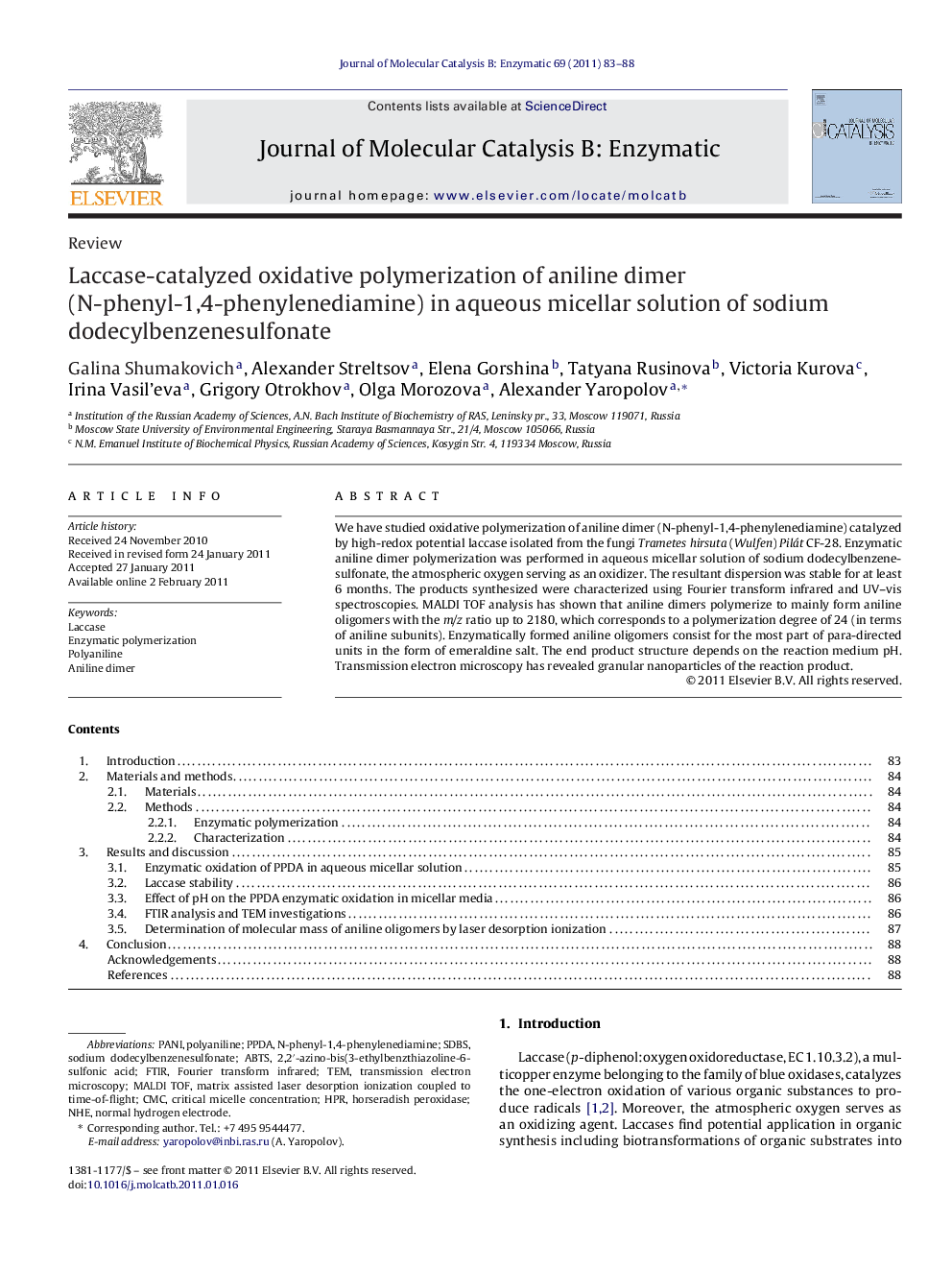| Article ID | Journal | Published Year | Pages | File Type |
|---|---|---|---|---|
| 70316 | Journal of Molecular Catalysis B: Enzymatic | 2011 | 6 Pages |
We have studied oxidative polymerization of aniline dimer (N-phenyl-1,4-phenylenediamine) catalyzed by high-redox potential laccase isolated from the fungi Trametes hirsuta (Wulfen) Pilát CF-28. Enzymatic aniline dimer polymerization was performed in aqueous micellar solution of sodium dodecylbenzenesulfonate, the atmospheric oxygen serving as an oxidizer. The resultant dispersion was stable for at least 6 months. The products synthesized were characterized using Fourier transform infrared and UV–vis spectroscopies. MALDI TOF analysis has shown that aniline dimers polymerize to mainly form aniline oligomers with the m/z ratio up to 2180, which corresponds to a polymerization degree of 24 (in terms of aniline subunits). Enzymatically formed aniline oligomers consist for the most part of para-directed units in the form of emeraldine salt. The end product structure depends on the reaction medium pH. Transmission electron microscopy has revealed granular nanoparticles of the reaction product.
Graphical abstractFigure optionsDownload full-size imageDownload as PowerPoint slideResearch highlights► Aniline dimer formation may be the rate-limiting stage of enzyme-catalyzed aniline polymerization. ► MALDI-TOF spectra of tetrahydrofurane-dissolved products of aniline dimer enzymatic oxidation are evidence for aniline oligomers with the polymerization degree 4–22 in terms of aniline subunits. ► Enzymatically formed aniline oligomers consist for the most part of para-directed units in the form of emeraldine salt. ► The final product structure of enzymatic polymerization of aniline dimer depends on the reaction medium pH.
